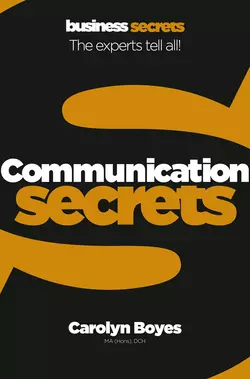Communication

Carolyn Boyes
Тип: электронная книга
Жанр: Зарубежная деловая литература
Язык: на английском языке
Стоимость: 191.96 ₽
Статус: В продаже
Издательство: HarperCollins
Дата публикации: 28.04.2024
Отзывы: Пока нет Добавить отзыв
О книге: The communication secrets that experts and top professionals use.Get results fast with this quick, easy guide to the fundamentals of Communication.Includes how to:• Use body language to build rapport with anyone• Deal with clients and colleagues at all levels• Get what you want in sales or negotiation• Excel in meetings and presentations• Master email and written communication